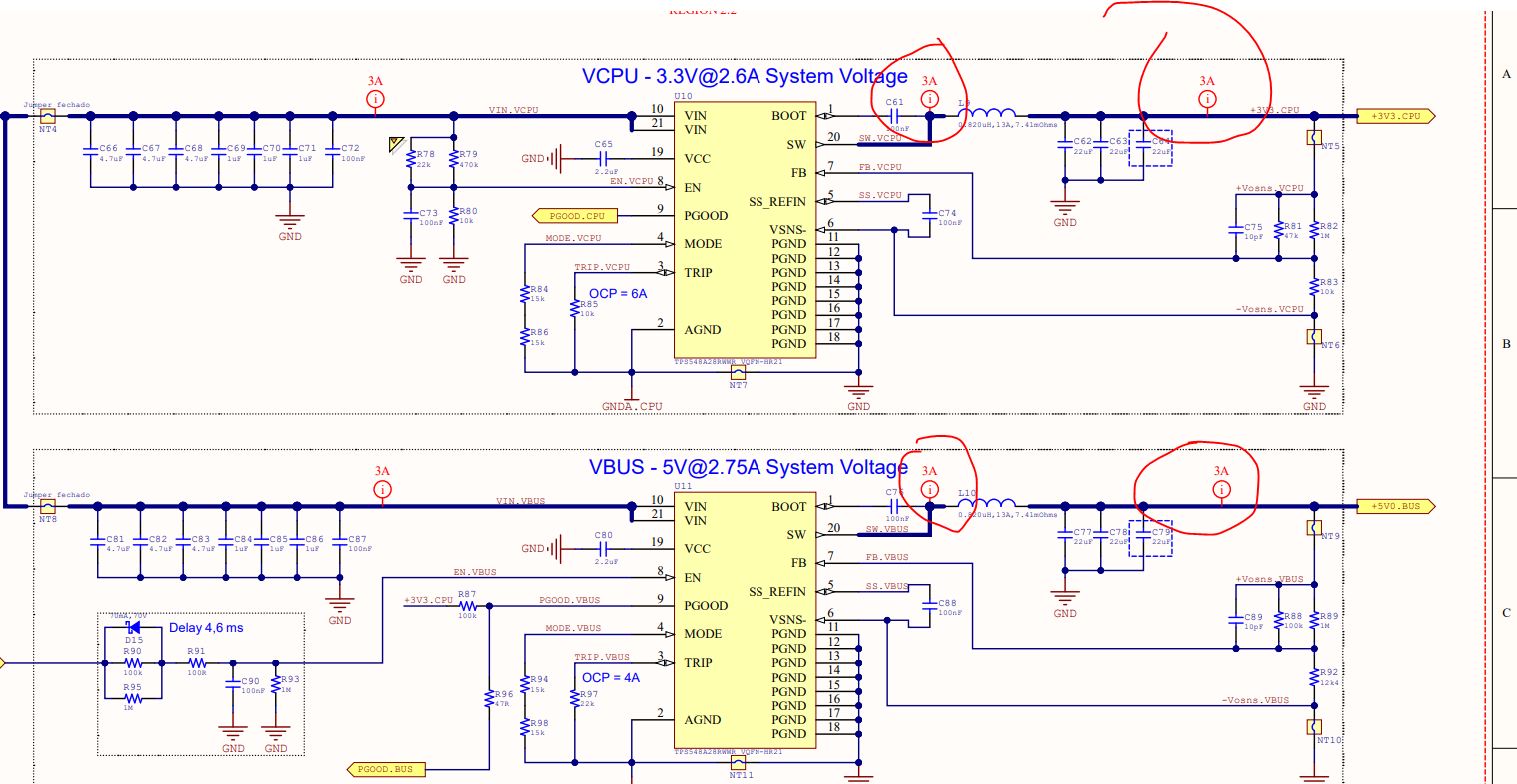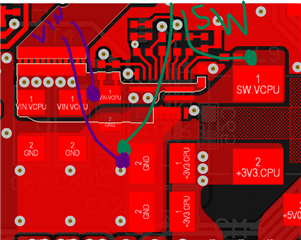Other Parts Discussed in Thread: , TPS54J061
Hello,
I designed a source with the TPS548A28 to operate within 3.3V @ 2.6A, with a maximum current of 6A with Vin = 14V and freq = 600kHz. However, during tests, when demanding a current above 4A, the TPS548A28 shorts the input and output to GND. After that, I added some capacitors at the input (2x 22uF) and at the output (9x 22uF + 1x 100nF), but the result is still the same. I also reinforced the GND lines, as my board only has 2 layers in 1/2oz.
I took some measurements on the SW output signal to try to understand the reason for this problem.
Below are the two layers of this prototype.













